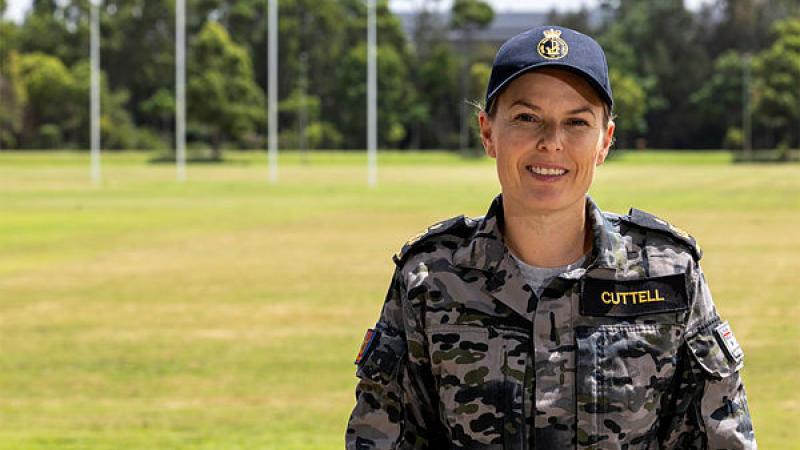Influenza vaccines can change from year to year as new strains of influenza virus appear. This is one reason vaccination against influenza is given every year.
The Australian Influenza Vaccine Committee (AIVC) reviewed and evaluated epidemiology, antigenic and genetic data of recent influenza isolates circulating in Australia and the southern hemisphere. Serological responses to the 2021-2022 vaccines, and the availability of candidate vaccines viruses and reagents were also reviewed by the Committee. Based on this review and the World Health Organization’s recommendation, the AIVC recommended the viral strains to be used for influenza vaccines in the 2023 southern hemisphere influenza season.
The TGA has accepted the recommendations of AIVC. This year there is a new A (H1N1)pdm09-like virus strain when compared to the composition of quadrivalent vaccines for Australia in 2022.
The egg-based quadrivalent influenza vaccines contain the following four viral strains:
- an A/Sydney/5/2021 (H1N1)pdm09-like virus;
- an A/Darwin/6/2021 (H3N2)-like virus;
- a B/Austria/1359417/2021 (B/Victoria lineage)-like virus; and
- a B/Phuket/3073/2013 (B/Yamagata lineage)-like virus.
Cell-based quadrivalent influenza vaccines contain the following four viral strains:
- an A/Sydney/5/2021 (H1N1)pdm09-like virus;
- an A/Darwin/6/2021 (H3N2)-like virus;
- a B/Austria/1359417/2021 (B/Victoria lineage)-like virus; and
- a B/Phuket/3073/2013 (B/Yamagata lineage)-like virus
Influenza and COVID-19 vaccination
Can I have the Influenza and COVID vaccine at the same time?
COVID-19 vaccines can be co-administered (that is, given on the same day) with an influenza vaccine. Studies demonstrate the safety and immunogenicity of co-administration of COVID-19 and influenza vaccines.
Further information for health professionals and consumers regarding influenza and COVID-19 vaccines is available from the Australian Technical Advisory Group on Immunisation (ATAGI) website.
Registered products
For the 2023 influenza season, the following eight influenza vaccines, will be available for use in Australia for the age groups listed against each product.
| Sponsor | Tradename | Age group |
|---|---|---|
Sanofi-Aventis | Vaxigrip Tetra | 6 months and over* |
Fluquadri | 6 months and over* | |
Fluzone High-Dose Quadrivalent | 60 years and over | |
GlaxoSmithKline | Fluarix Tetra | 6 months and over* |
Seqirus | Fluad Quad | 65 years and over |
Afluria Quad | 5 years and over | |
Flucelvax Quad | 2 years and over | |
Viatris | Influvac Tetra | 6 months and over* |
*Guidance for the dose in children aged 6-35 months is available in the product information.
All 2023 southern hemisphere seasonal influenza vaccines available for use in Australia are quadrivalent influenza vaccines (QIVs).
The following quadrivalent vaccines will be available on the private market for 2023:
- Flucelvax Quad, a quadrivalent vaccine produced using mammalian cell culture for potential use in persons 2 years of age and older
- Influvac Tetra for children aged 6 months and older; and
- Fluzone High-Dose Quadrivalent will also be available on the private market for 60 years and older.
All other vaccines in the table above will be available free of charge on the National Immunisation Program (NIP). Fluquadri will be available on the private market and be available for NIP doses as a backup to Vaxigrip Tetra doses.
Influenza vaccine doses for all ages is 0.5 mL, except Fluzone High-Dose Quadrivalent, where the dose is 0.7mL.
For more information on individual vaccines, please refer to the relevant Product Information document or Consumer Medicine Information document.
In conjunction state and territory health authorities, the Department of Health will be closely monitoring adverse event reports during the 2023 influenza vaccination program.
Vaccines for use in children
For children, four vaccines are available from 6 months and over: Fluquadri, Fluarix Tetra, Influvac Tetra and Vaxigrip Tetra. Afluria Quad for children 5 years and over, and Flucelvax Quad for children 2 years and over.
All children aged 6 months to less than 5 years are now eligible to receive free annual influenza vaccines under the NIP.
The dose of influenza vaccines for all ages is 0.5 mL.
Vaccines for use in under 65s
Three vaccine brands are being supplied under the NIP in 2023 for people aged under 65 years who are in the following at risk groups:
- o Aboriginal and Torres Strait Islander people,
- pregnant women, and
- people who have certain medical conditions.
Vaxigrip Tetra, Fluarix Tetra and Afluria Quad. Vaxigrip Tetra and Afluria Quad are registered for all people under the age of 65 years.
Influvac Tetra and Fluquadri are also registered for use in people under the age of 65 years. They will be available on the private market.
Vaccines for use in over 65s
All eight vaccines in the above table of products are registered for use in those aged over 65 years.
The adjuvanted QIV, Fluad Quad and the non-adjuvanted Fluzone High-Dose Quadrivalent are specifically for use in elderly.
Fluad Quad can be used in individuals from 65 years of age and above.
Fluzone High-Dose Quadrivalent can be used in individuals from 60 years of age and above.
All people aged 65 years and over are eligible for free influenza vaccines under the NIP.
What is in the influenza vaccine?
Information on specific ingredients included within individual influenza vaccines can be found on the label of the medicine, the Product Information (PI) and Consumer Medicine Information (CMI) leaflets for each individual vaccine. You can ask your pharmacist for a copy or find it through our CMI database by searching the product’s name. The CMI provides the full list of ingredients for each product.
Additionally, information on medicines supplied in Australia, including ingredients, can be located by searching the Australian Register of Therapeutic Goods (ARTG) either by product name or ARTG number.
Influenza vaccines available for the 2022 influenza season within Australia do not contain any thiomersal/mercury.
Formaldehyde is used in the early stages of manufacture of some influenza vaccines as an inactivation agent. The formaldehyde is removed in the latter stages of manufacture and the product is tested to ensure formaldehyde levels are below detectable limits before the final product can be released.
All influenza vaccines available this year are latex free. However, the possibility that the product may have come into contact with instruments which contain latex cannot be excluded. Patients who are extremely sensitive to latex should consult their doctor for advice.
Fluad Quad is the only product that contains an adjuvant to boost effectiveness of the vaccine in people aged over 65 years. Fluzone HD Quadrivalent has a higher content of antigen in it and designed specifically for use in the elderly.
Further information
Information for health professionals is available from the ATAGI Influenza Statement. This includes information on the timing of vaccines becoming available for the 2023 season and also the recommended interval between influenza and COVID-19 vaccines.
Information for consumers is available from NPS MedicineWise.
For more information see Influenza vaccine: the annual Southern Hemisphere influenza vaccine production and the regulatory approval timeline.
Reporting of adverse events following influenza vaccine
Health professionals and consumers are encouraged to report all adverse events associated with influenza vaccination in patients of any age to the TGA or through the current arrangements in their state or territory.
All reports contribute to the TGA’s ongoing monitoring of the safety of influenza vaccines.
The TGA cannot give advice about an individual’s medical condition. You are strongly encouraged to talk with a health professional if you are concerned about a possible adverse event associated with a vaccine or medicine.








